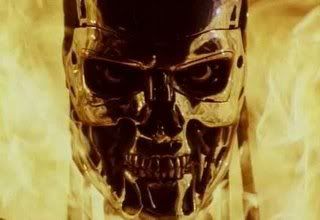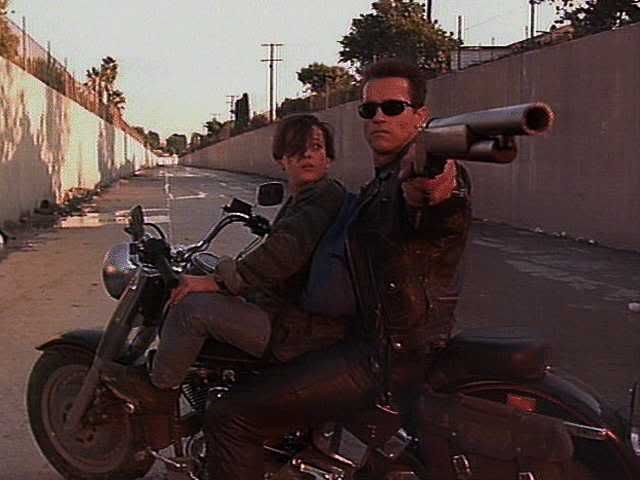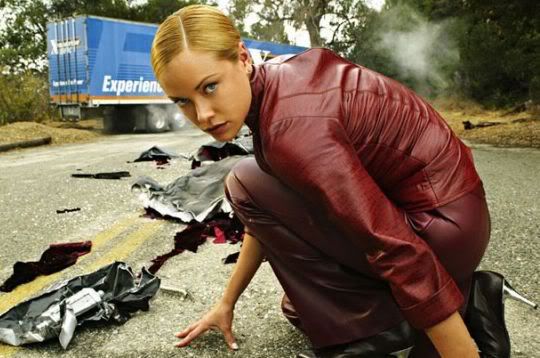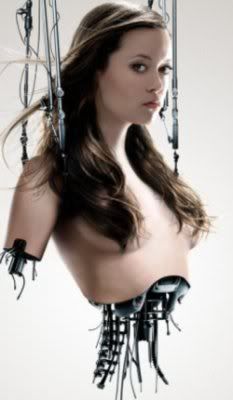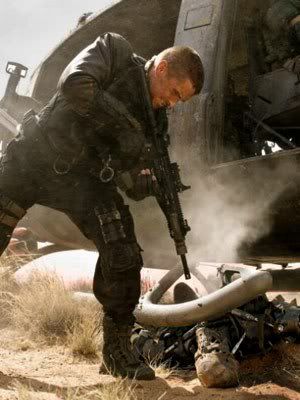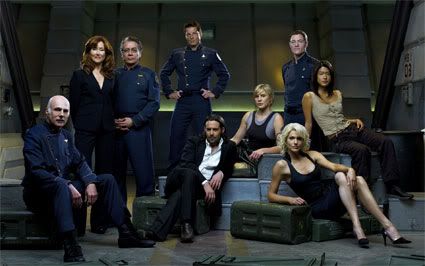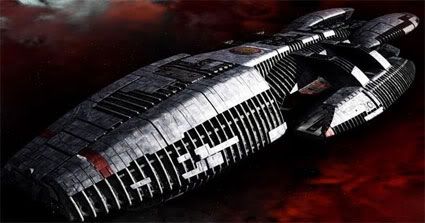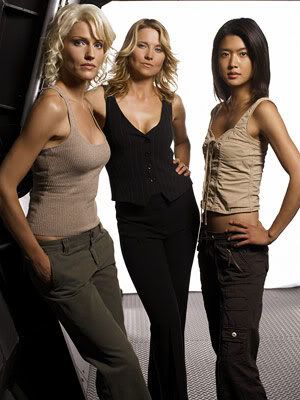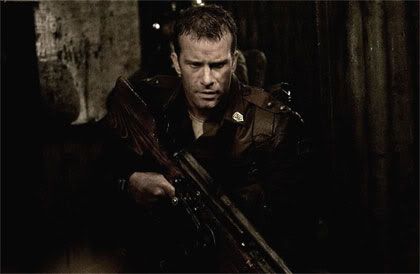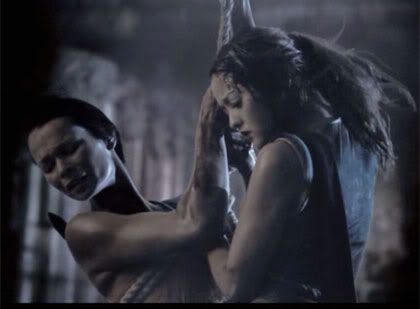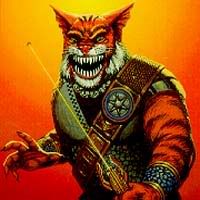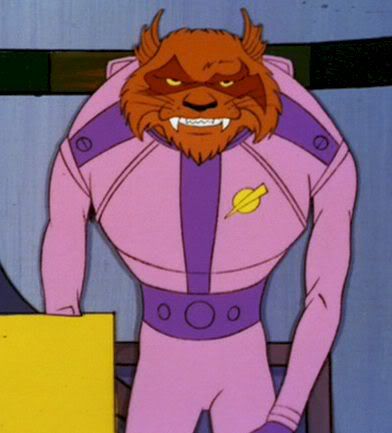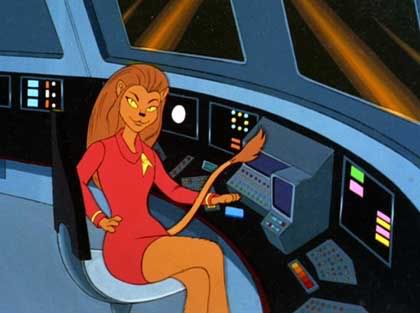
Wow, it’s been a while since I’ve reviewed a current movie. I blame my job schedule and related finances. Anyway, when I got a couple of movie passes for Christmas, my wife and I debated what we’d go see. We settled on Daybreakers and, well, anything I say here is going to sound a lot like MovieBob’s review. But you know something? It’s so good it’s worth giving the “Go See This” treatment at least twice. The movie stars Ethan Hawke, Willem Dafoe, Claudia Karvan, Michael Dorman, Isabel Lucas and Sam Neill.
Stuff I Didn’t Like

“Hmm, apparently if we extract sparkles and Dawson’s Creek romantic crap from the movie, it’ll be completely awesome!”
- To be honest, Ethan Hawke’s character reminded me of Brad Pitt’s from Interview with a Vampire. Now, I know vampires are nothing new, and a reluctant vampire can easily shuffle the character into the ‘protagonist’ category, but I think he protested a bit too much. It didn’t really get to the point of annoyance, but it came close. Not necessarily a bad thing, per se, this is just my personal opinion.
- I’m not sure why vampires explode when staked. My wife gives me crap for getting hung up on the fine details on vampirism when I should be more concerned about how blood-sucking fiends from beyond the grave even exist in the first place. I guess this is another personal fault, since I’ve worked with vampires quite a bit in a writing and gaming sense for many years. I mean when I’ve participated in vampire LARPs, nobody explodes when staked so I guess I’m sort of used to that. (Yes, I’ve LARPed in the past, shut up.)
Stuff I Liked
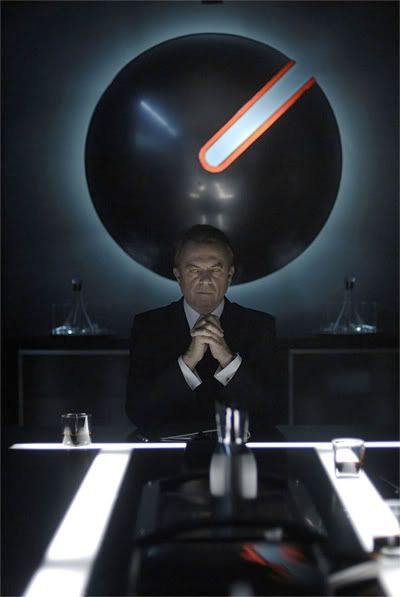
“Awesome, you say. Will it still appeal to the powerful and lucrative tween demographic? No? Then keep the sparkles in. This I command.”
- There are so many little touches that remind you that these vampires are from the old school. They don’t cast reflections, they don’t have pulses and they have to inhale right before speaking since they don’t have to breathe. Their fangs are always out and their eyes are disconcerting unnatural colors. It’s a refreshing change from what we’ve had to deal with recently.
- The metaphors on fuel shortage and the examples of corporate greed overwhelming the long-term benefits to humanity don’t overshadow the characterization or storytelling. They exist, they state their points and move on. Sort of like the Ethan Hawke/Brad Pitt parallel brushing the annoyance factor (again, in my opinion), the metaphors nudge but never quite mount the soapbox. They are good lessons that are well-presented, and like District 9, it’s nice to see an action genre flick that has something to say other than “HERE ARE SOME EFFECTS.”
- I liked the degeneration of vampires into chiropteran monsters, and the varying reactions of the ‘refined’ vampires to the animalistic cannibals that were once friends or even family. As much as the vampires are themselves fiends, the different ways in which they deal with these unfortunates actually gives them a layer of humanity.
Stuff I Loved
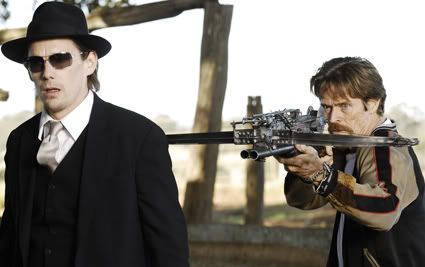
“Look, friend, you better keep the sparkles outta my vampire flick, or so help me I will go completely Green Goblin on your ass.”
- Sam Neill. I love the way he projects cold, objective creepiness in all of his scenes. He’s very much an old-school vampire, Dracula in a suit, uncompromising in the realization of his desires and ruthless in the execution of his will. He’s manipulative, he’s diabolic, and I adored every scene he was in.
- Willem Dafoe. I don’t know if I need to say much more about the man, as he’s one of the most versatile and memorable character actors I’ve ever seen, and this performance is no exception. It’s almost like he and Sam are vying for the position of ‘most awesome character’ in this movie, and I think it’s just about a tie. I love his cars, too – I think my father owned a Firebird Trans Am at one point.
- In spite of his reluctant vampire role in the first act, Ethan Hawke does a great job of giving us a main character with an arc we can follow and growth we can support. Again, my initial near-annoyance with his constant protestation wore off very quickly, and he’s one of the characters that show real humanity and depth. I have to admit I’m not terribly familiar with a lot of his work, and after seeing Daybreakers, I know I need to change that.
- The pace of this film, and the tightness of its storytelling, are just about perfect. It doesn’t throw too many things at us at once so we lose track of what’s going on or what’s at stake, it takes the time to develop its characters just enough for us to care about them, it doesn’t skimp on the action or the gore, and it does all of this with the sparing use of special effects and a brevity that’s refreshing and compelling.
- The scene in the shade of the tree where Ethan Hawke and Willem Dafoe meet for the first time was done so well I about giggled with glee. From the car’s automated warning about the UV level to Hawke all but dancing from one pool of shadow to the next, the scene was downright exceptional. I got the feeling he was in real danger, putting himself at extreme risk for the sake of something he believed in. This scene caused most of my initial annoyance at his character to evaporate, and from then on I was definitely rooting for him.
Bottom Line: I’m going to reiterate MovieBob’s sentiment: You should go see this. I know some people out there aren’t big fans of gore, which means they’re missing out on a great example of screenwriting, acting and direction. It’s paced perfectly, the story is packed expertly, every character has nuances and depth and the action ramps up towards the end to just the right pitch. If you can handle a good amount of on-screen blood, especially in the film’s third act, Daybreakers is a satisfying and rousing revival of the old-school vampire movie. It does everything right, doesn’t sell you short and will leave you wanting more. Go sink your metaphorical fangs into it. This is a badass movie, and it is definitely, definitely worth your time.


